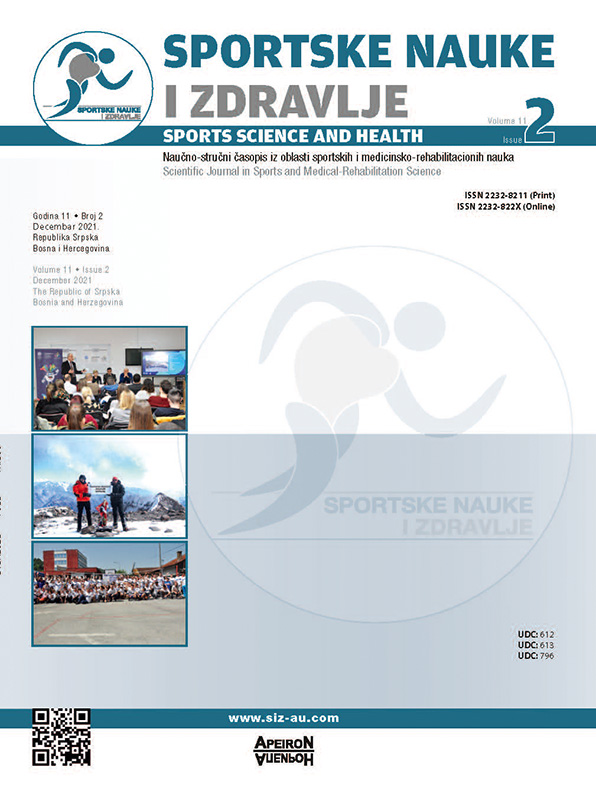Relationship Betwen the Quality of Life and the Lumbar Syndrome, in Middle-Aged Persons
DOI:
https://doi.org/10.7251/SSH2102182RAbstract
Lumbar syndrome (LS) is very common in the population of middle-aged people, especially those who are physically insufficiently active. LS is characterized by lower back pain, and the frequency of pain is one of the risk factors for the quality of life. The aim of the study is to identify the quality of life in people with LS, in relation to the frequency of pain that occurs. The sample consisted of 202 respondents (93 male and 109 female, the average of 47.5 years of age) which was stratified in 3 subsamples, in relation to the frequency of the back pain. The data was collected by a questionnaire designed for the purposes of this research, PAL questionnaire (Perception of Active Lifestyle, Nešić, 2016), which is intended for self-assessment of the quality of life. Based on Spearman’s Rho coefficient, it has been proven that with the more frequent back pain, the quality of life of the respondents’ decreases (p=.000). Relatively high values of χ2 = 23.09 indicated a statistically significant difference in quality of life in people with different frequency of back pain (p=.000). Respondents who had occasional back pain had the highest quality of life, while the respondents with very frequent back pain, had the lowest. In people with a history of lumbar pain, physical activity occupies a very important place, it affects the reduction and the frequency of pain and thus directly on the quality of life of people in this population.
